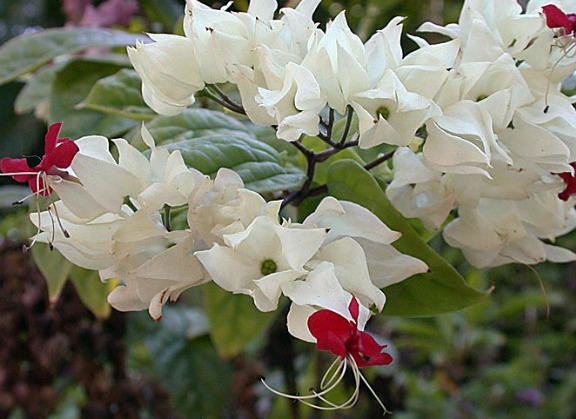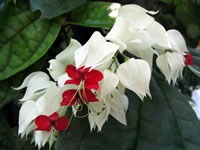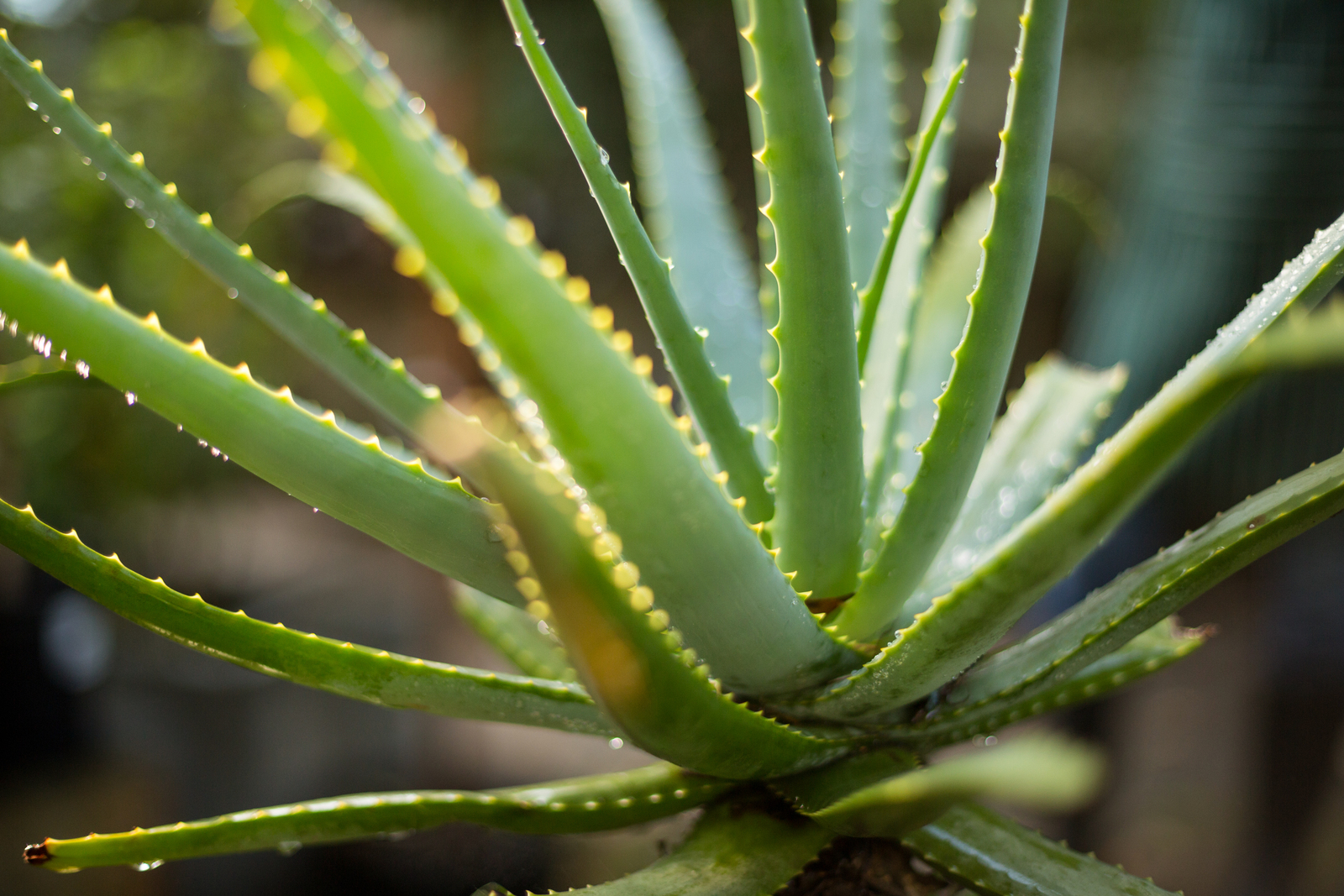Tropical Bleeding Heart Vine – Dramatic Heart-Shaped Blooms
The tropical Bleeding Heart Vine (also known as Glory Bower and Clerodendrum thomsoniae) is a beautiful exotic vine that puts on an amazing display of stunning red and white flowers.

This tropical climbing vine produces beautiful flowers in clusters of eight to ten blooms, which resemble a group of hanging bleeding hearts. Each flower has a creamy white five-lobed calyx and a bright crimson five-petaled corolla.
The magnificent flowers are long-lasting; they bloom throughout the year, but mainly in the spring. Their white sepals gradually change to light purple as they wither off. The ovate leaves have a smooth texture, are dark green in color, and grow to 5 – 7 inches in length.
Green fruits develop periodically, turning black as they ripen. The four black seeds that develop within each fruit can be used for propagation.
The bleeding heart vine is a twining, evergreen shrub native to South Africa. In its native habitat, Clerodendrum thomsoniae can reach heights of ten to fifteen feet tall.
When planted in a container, this climbing vine will remain much smaller. When planted in the landscape, some type of support should be provided, such as a trellis, wall, or fence.
Bleeding Heart Vine Information and Plant Care Tips
USDA Hardiness Zone
USDA Zone 10 and Up
Lighting
Full sun to partial shade. Will benefit from some direct sunlight.

Temperature
High temperatures of 18-24°C (65-75°F) in summer are ideal. In winter, minimum temperatures of 13-15°C (55-60°F) should be maintained.
Humidity
Minimum humidity of 50% or higher; however, they will tolerate lower levels without harm.
Watering
Water regularly during the summer, approximately least twice a week. Reduce watering towards the end of summer. During winter, the bleeding heart vine will only need watering about twice a month. Do not overwater this tropical vine.
Fertilizer
You will want to feed your plant about every two weeks. Use a gentle liquid fertilizer that you can add to the water. If you plant outdoors you can add slow release fertilizer to the soil. Do not fertilize during the winter.
Pruning
The Bleeding Heart Vine will need to be pruned during the winter months for best growth during the warmer months.
Propagation
Propagate from woody stem cuttings. If you want to plant more vines you can use stem cuttings; they will root in approximately two weeks. Mist these cuttings on a frequent basis.
Soil
Grows best in fertile soil mixed with sand for good drainage.
Pests and Diseases
Mealy bugs indicated by white tufts on stem and leaves.
Treatment: Remove mealy bugs using a cotton swab dipped in diluted methylated spirits or spray with a suitable insecticide.
Silky webbing due to red spider mites.
Treatment: The humidity level is most likely too low. Spray the plant daily to keep humidity level high. For a severe attack, remove the affected parts of the plant and spray remaining parts with an insecticide.
Discolored patches on some of the leaves are due to scorching.
Treatment: Move the plant out of the sun into the shade.
Display and Uses
This vine can be planted in hanging baskets or pots. If planted in a traditional pot, provide some type of support, such as a small trellis. Support is necessary when planted in the landscape as well; plant near a trellis, wall, or fence.
Note: This tropical vine will produce more flowers when planted in a large container, exposed to as much light as possible.
Tips for Planting Bleeding Heart Vine
- The best time to plant is in the spring. If planting outdoors, choose a bright, sunny location.
- Clerodendrum thomsoniae grows best in fertile soil mixed with sand for good drainage. If planting in a container, be sure the pot has holes on the bottom for proper drainage – this will prevent root rot.
- After placing the plant in a container and covering the roots with soil, you can add a small amount of mulch around it; do not allow the mulch come into contact with the plant itself.
- After planting the Bleeding Heart Vine, make sure that you water the plant well. This is important until the plant is well established. Avoid using cold water, cold water may put your plant into shock. It is important to keep the soil most, without over watering.
- Fertilize your plant about every two weeks. Use a gentle liquid fertilizer that you can add to the water. If you plant outdoors you can add slow release fertilizer to the soil.
- Clerodendrum thomsoniae should be pruned during the winter months for best growth during the warmer months.
- If you want to plant more vines you can use woody stem cuttings; these will root in approximately two weeks. Mist cutting frequently.
Buying Tips
- Purchase young plants in spring or summer. You will find them at most garden centers and nurseries throughout their flowering period.
- The foliage should be fresh and green. Avoid plants with discolored leaves and signs of pests or diseases. Choose plants with plenty of buds and a compact shape.
Clerodendrum thomsoniae will last for many years, and produce an abundance of flowers, as long as it is provided it with high humidity and sufficient light.
- Home
- Tropical Vines
- Bleeding Heart Vine



